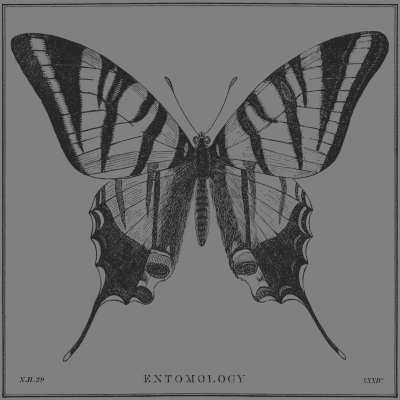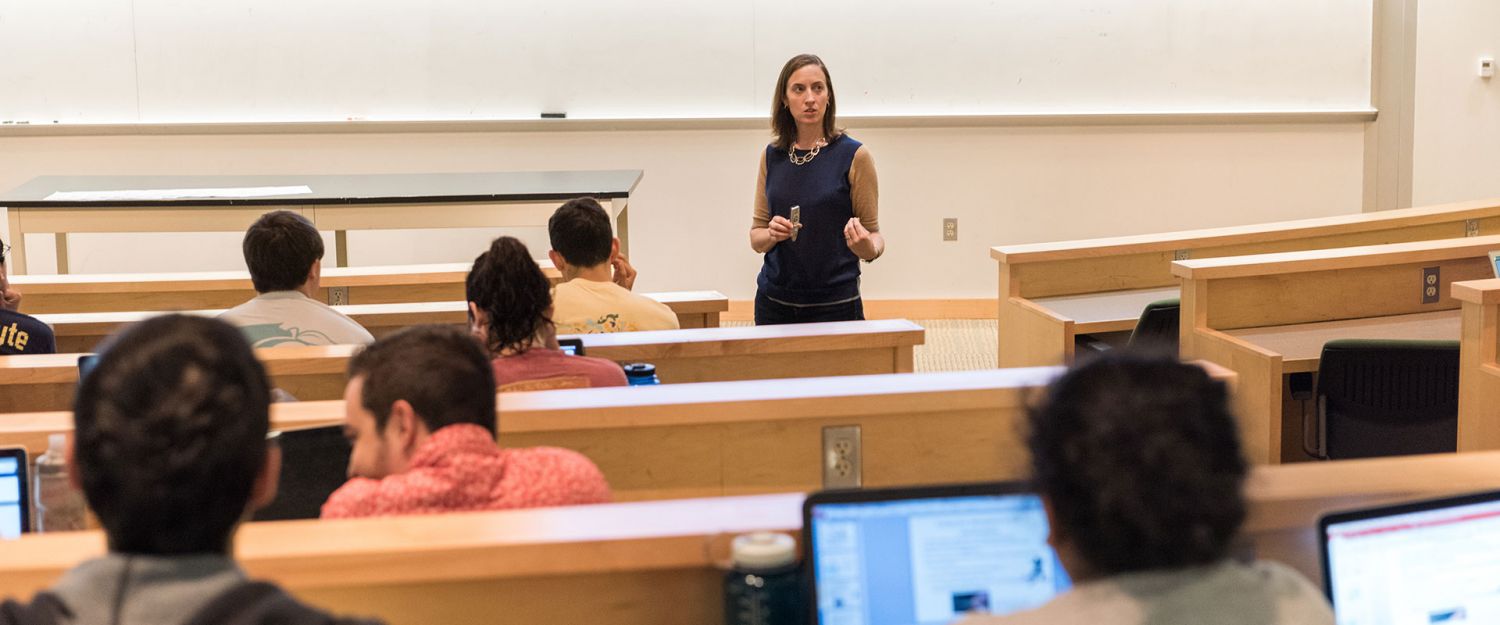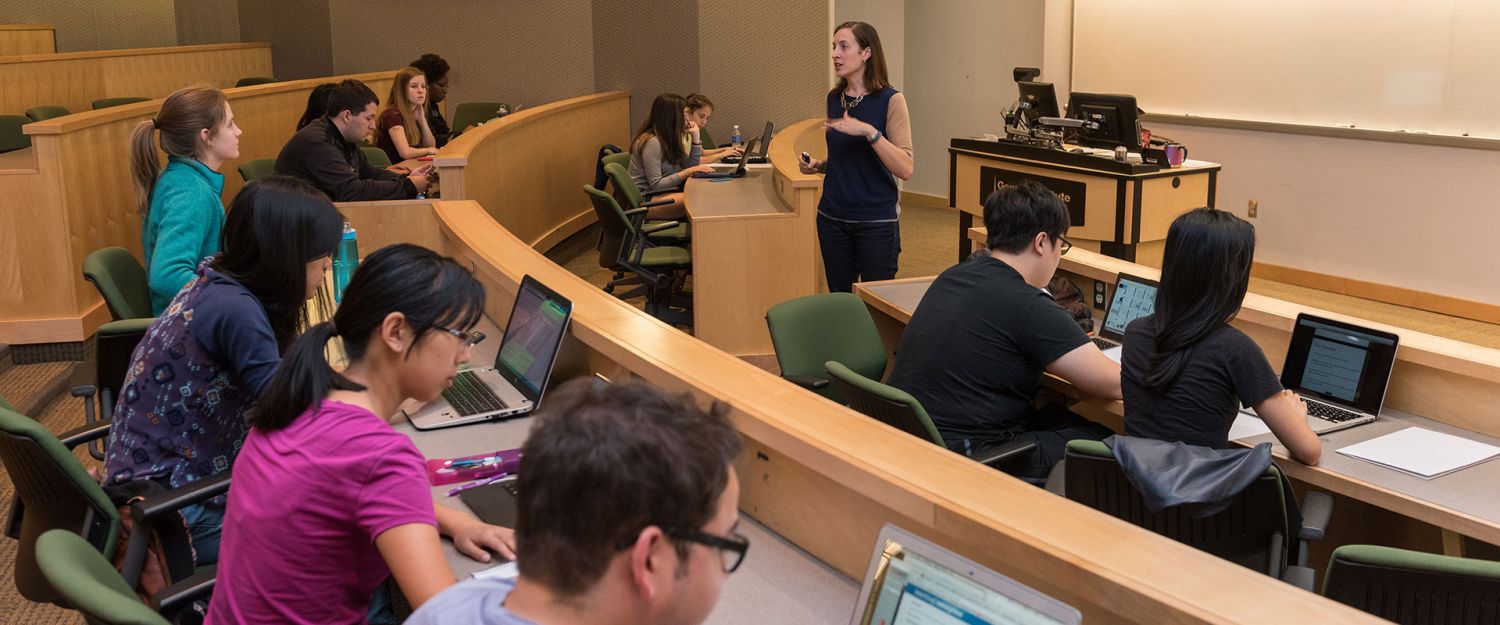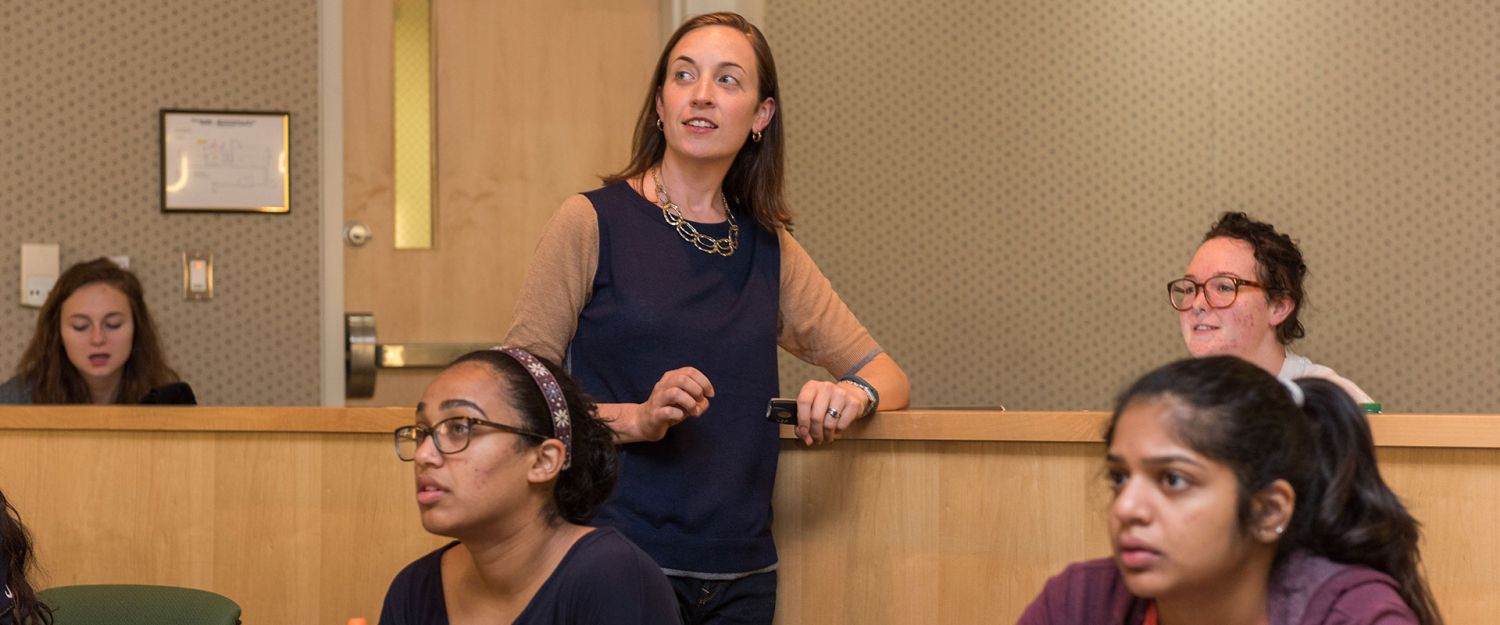
In the Classroom with Linda Green
When teaching Introduction to Organismal Biology (BIO 1520), Linda Green likes to tap into students’ curiosity by taking a fresh look at familiar occurrences.
“There are a lot of things in biology that people never think about,” said Green, senior academic professional in the School of Biology. “We see it every day, but most people never consider that the way a plant on a windowsill bends toward the light is a function of a hormone in the shoot and the cells elongating. In class, we pick apart why the plant is growing sideways and discuss what is involved in the process. That’s something that the students may not come in wanting to know, but it’s a way that I can connect with their curiosity.”

This is Green’s eighth year at Georgia Tech. Before coming to Tech she was already familiar with the campus because she grew up in Norcross, Georgia, and both of her parents are Tech alumni. Her dad earned a B.S. in chemical engineering and a master’s in nuclear engineering and was a practicing nuclear engineer, and her mom majored in and taught mathematics.
Although her mom was an educator, the teaching bug didn’t bite Green until she became a teaching assistant.
“I was very inspired by a teacher I had in graduate school [at the University of Virginia],” she said. “I really enjoyed learning his style. He had a wonderful rapport with students. He took time to engage with them in class, and he wanted to see them succeed.”
After earning a Ph.D. in ecology from the University of Virginia, Green took an adjunct position at Virginia Commonwealth University where she taught 720 students in three sections of Introduction to Biology.
“It was a very hard experience, and yet I came out of it still wanting to teach,” she said. “That was a good indicator that this is something I should do.”
She was right.
In 2014, Green received the Eichholz Faculty Teaching Award, and, in 2012, she received the CETL Undergraduate Educator Award. She also was a 2012-2013 National Academies of Science Education Fellow in the Life Sciences.
CLASSROOM STRATEGIES
Green has “flipped” her classroom, meaning the students engage with course content before class via readings or videos, and then activities and discussion in the classroom allow them to gain deeper knowledge.
“I have a set of instructions for them to utilize for every class of the semester. It may involve some combination of textbook reading, a video, or a short online activity,” she said. “The students have that material to preview in the hopes that they will be comfortable with the vocabulary and have some idea of what we’re going to do.”
The students take a five-question knowledge evaluation quiz before class. Then Green leads them through a combination of activities during class, and they have a weekly homework assignment. The combination of those three things is meant to engage students with the material in multiple ways.

“When we get to a particular class session, I have articulated usually two to four learning objectives that describe exactly what I want the students to be able to do after the class session,” Green said.
Before she started using this model, Green said she would take a chapter’s worth of material and go through it page by page.
“That approach leads to a very dry and content-rich session that may not engage the critical thinking that builds students’ toolboxes of how to think like a scientist,” she said. “I’m glad that I have moved away from that model because it has given me more flexibility to challenge the students to do something with the material [during class].”
Green credits the Center for the Enhancement of Teaching and Learning (CETL) for helping to develop her teaching strategies. She regularly participates in CETL workshops, and she was selected twice to participate in CETL’s Teaching Scholars program.
“Just yesterday, I reached out to my Teaching Scholars group from two years ago,” she said. “Six of us got together with a CETL professional to chat about how each of us has implemented the flipped model in our classrooms, what’s going well, and what we needed some help with. It was fantastic. I wanted to refresh my activities because I felt like my class had gotten a little stale and needed some new ideas.”
REALLY REACHING THE STUDENTS
Introduction to Organismal Biology is required for biology majors, but there are many non-biology majors in the course, too.
“We have a broad range of prior knowledge to build on,” said Green. “So, I have to be careful about my vocabulary. If I use too much jargon, I really lose student engagement because they can’t keep up with the connections I want them to make if they don’t know the vocabulary.”
For students who have not taken a biology course in a few years, Green points them to resources where they can get some background on the terminology being used in class.

During class, Green asks questions and uses a software program called Learning Catalytics that allows students to answer electronically.
“If I see that the answers are random and everyone is choosing something different, I often will stop the class and facilitate more discussion, taking a moment for them to talk to their peers and then to talk with me, too. Peer learning can help to redirect the class when half the class gets it and half the class is stuck,” Green said.
Following exams, Green emails students who don’t seem to understand the material and suggests that they meet with her. She asks them about their study strategies, and if she hears things that are not effective, she tries to redirect them to more efficient strategies.
For students having anxiety following a poor performance on the first exam, Green tries to assuage the situation by first appealing to their quantitative side, explaining how much the particular exam is worth. Then she addresses what they can do differently, emphasizing small changes that can make a big impact.
ADVICE FOR NEW FACULTY
To new faculty members, Green suggests creating a team atmosphere of “we’re in this together” to inspire a level of trust where the students are willing to work hard despite grade setbacks.
“Think about the environment you’re creating in the classroom,” Green said. “I believe that faculty should position themselves to be a team with their students, with the goal of having the students learn the material by the end of the semester. This keeps you from feeling there’s an antagonistic relationship where you — as the instructor — dictate the expectations, tell the students what they need to know, and then test them on it. I think a lot of success in the classroom is dependent on managing student motivation and frustration. If your students don’t trust that by working hard they will feel successful at the end of the semester, you can’t get them engaged in the classroom.”




